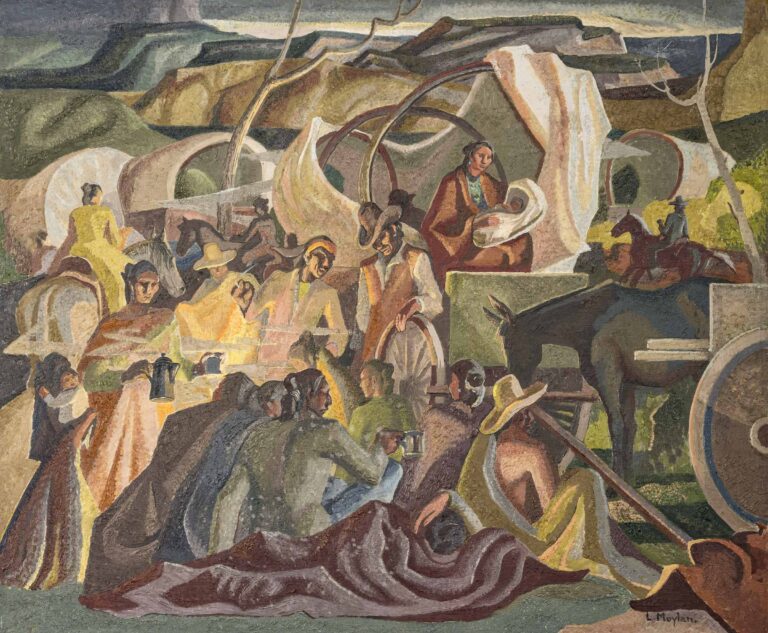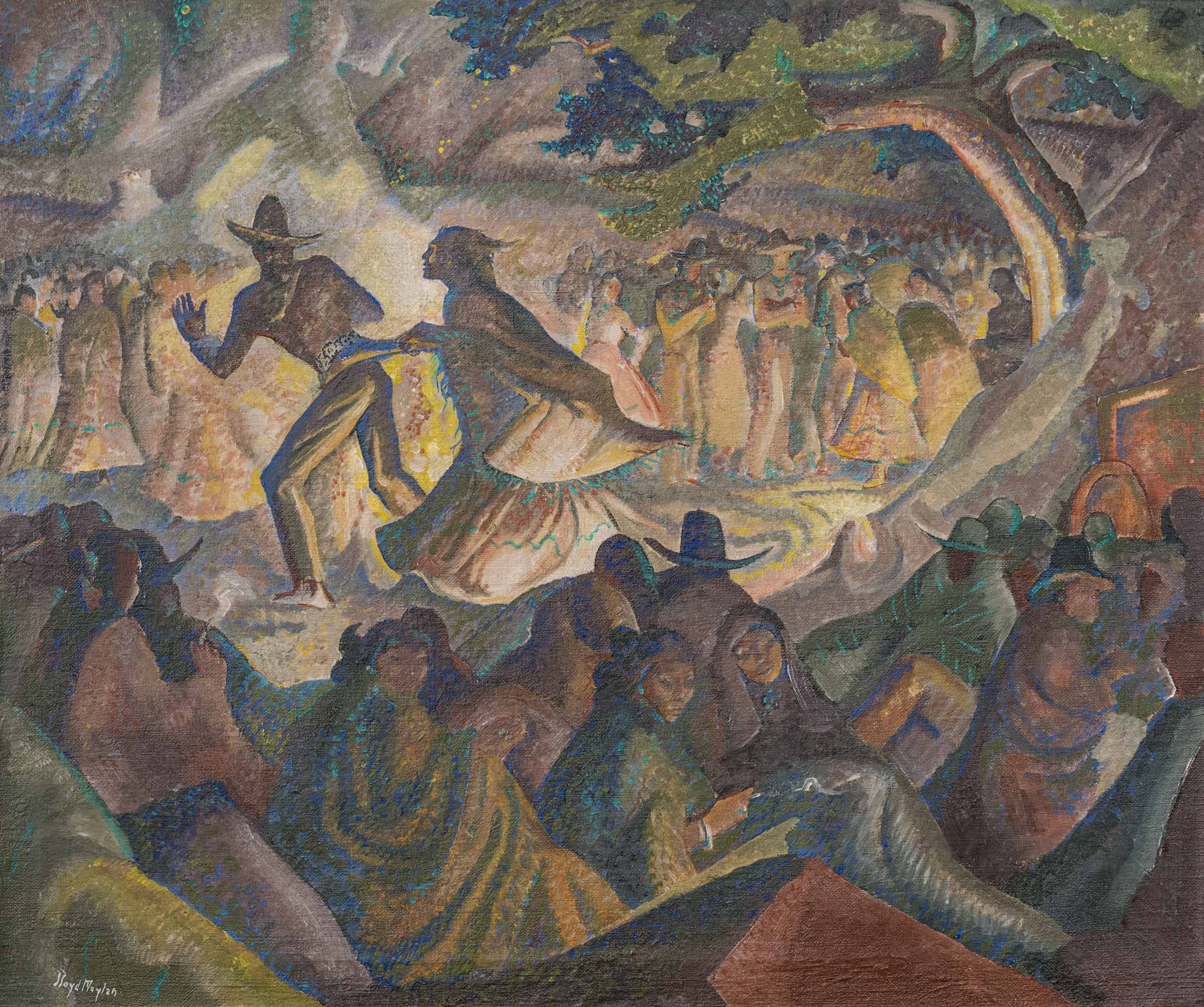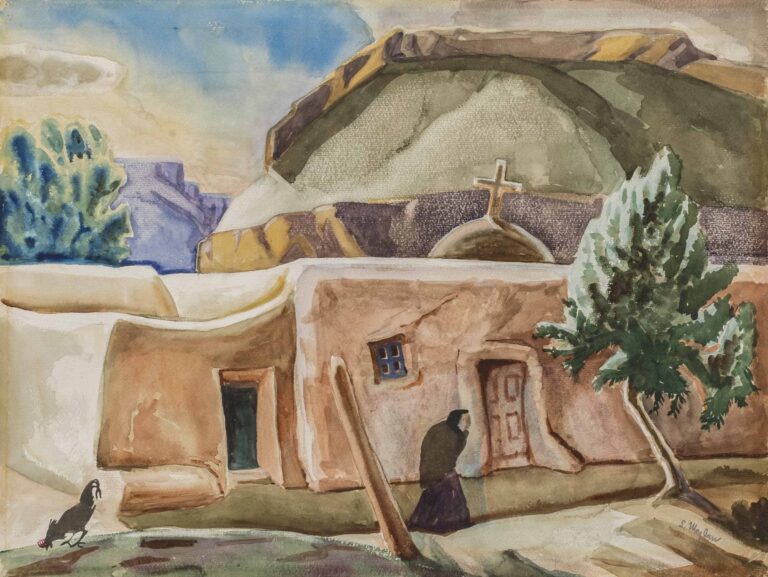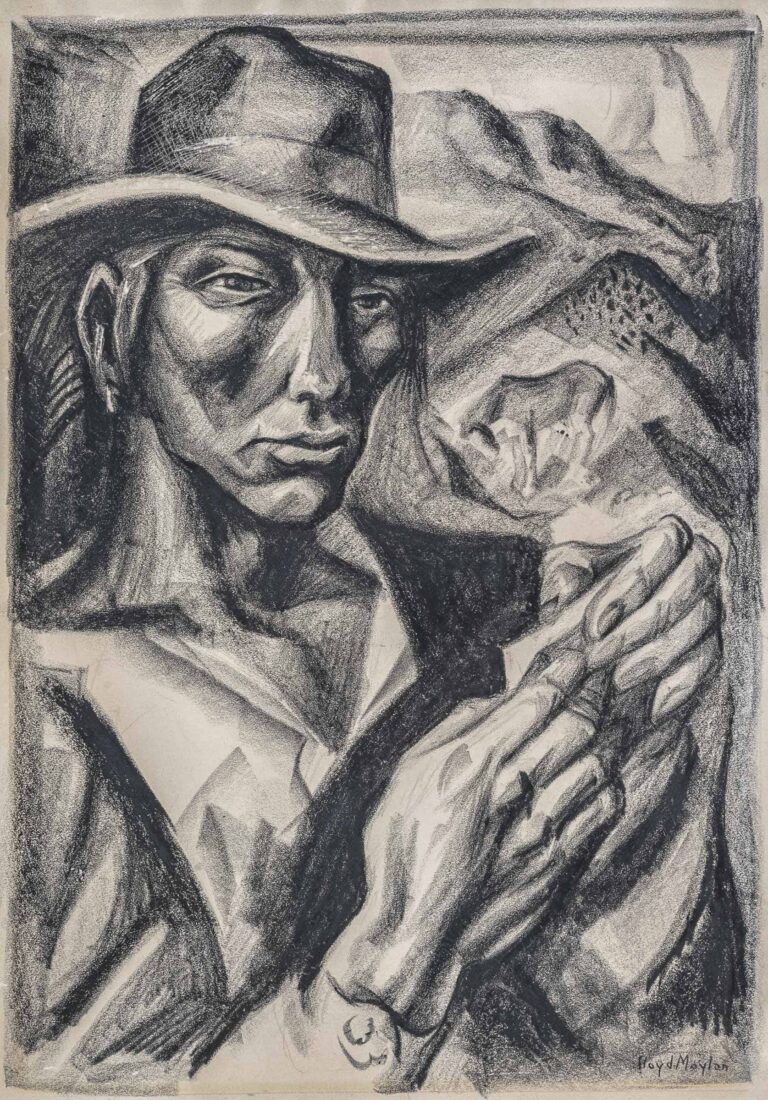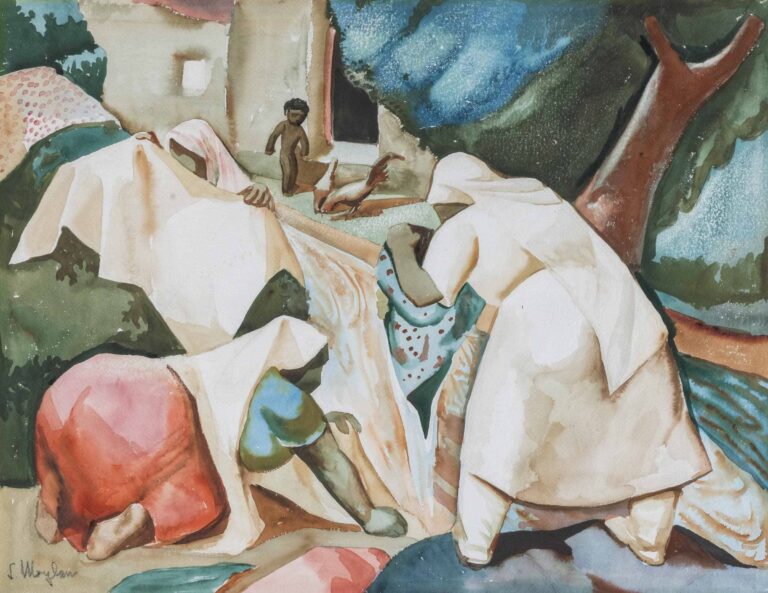Lloyd Moylan was known by his contemporaries as a “specialist in Navajo subject matter.”1 It is believed that, in the spirit of the Western American self-styled artist-explorers who preceded him, he spent a significant amount of time visiting the Navajo Nation. Indeed, his paintings, presumably of people he met and events he attended, communicate first-hand experience. In Squaw Dance,2 Moylan takes a documentary approach both in the way he positions the viewer as an onlooker removed from the action and also in details such as the curls of cigarette smoke. (The lived experience of this piece is highlighted by comparison to Moylan’s Dance at San Felipe.)
